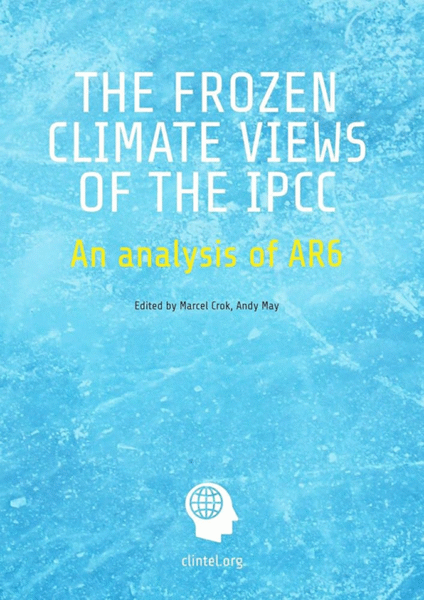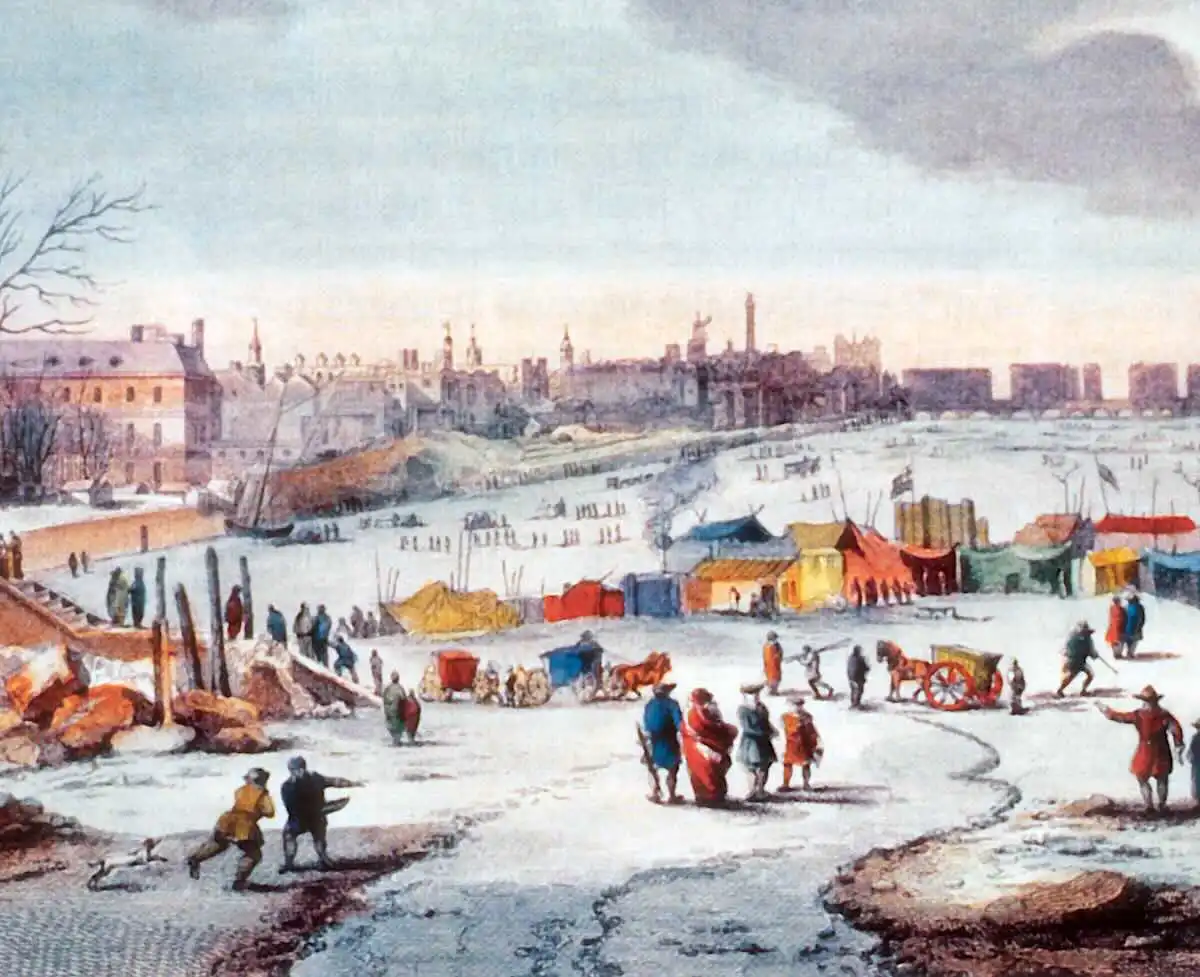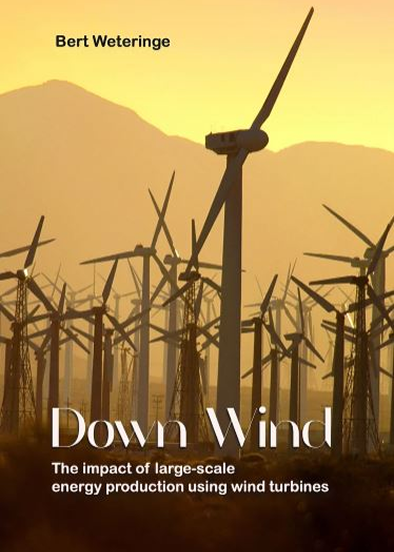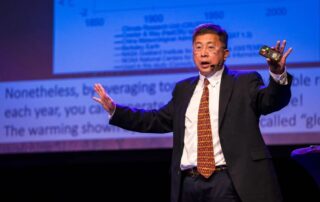The ‘Climate Crisis’ of 1695
Centuries-old thermometer records show central England warmed 2°C in 40 years—twice the rate of modern warming.
No one would fault you for believing that between 1980 and 2020, we experienced a warming of the climate at a rate that is unprecedented in the last 2,000 years. [some emphasis, links added]
That widespread claim is based on reconstructed (non-thermometer) temperatures up to 1850 and observed (thermometer) temperatures thereafter.
However, sealed thermometer technology predates 1850 by approximately 200 years, and when that data is used, the widespread claim melts away.
Take a close look at the chart below: it is the longest thermometer record in the world, dating back to 1659. The data were compiled by the MET Office, the United Kingdom’s national meteorological service.
With three and a half centuries of instrument data, it transcends being a weather record; it is a climate change record for central England.
The temperature readings were taken on multiple thermometers by many different people, who were probably considered the techies in their day, and none of whom were employed to prove that human influence was warming the planet.
Compare the 40-year temperature trends (black dashed line) of 1695 to 1735 to those of 1980 to 2020.
The warming trend from 1695 to 1735, 2°C over four decades, was double that of 1980 to 2020, at 1°C over four decades.
The earlier warming period was preindustrial—an era whose technology was epitomized by humans circling the globe in wooden sailing ships. Spaceships orbiting the planet, along with heavy manufacturing and prodigious energy production, mark the latter period.
Earlier Englishmen survived from 1695 to 1735, experiencing twice the warming of the last 40 years, and with much less technology.
Had King George II been asked if warming in central England during his reign by 2°C in 40 years was an existential threat to his kingdom, he might reply instead that it was a time of plenty that resulted in English domination.
George II chased Bonny Prince Charles out of Scotland, the French out of North America, and the Spanish around the globe just because they cut off an English naval captain’s ear.
There was no hysteria over the 2°C warming in the early 1700s in Great Britain, even though there were many cultural similarities to today’s global community.
It was a country of enlightened scientific reasoning. Isaac Newton had just published his laws of motion and gravity. It was also a center of significant engineering advances.
• In 1709, Abraham Darby kick-started the Industrial Revolution with the mass production of iron using coke made from coal instead of wood.
• In 1712, Thomas Newcomen built the world’s first commercial steam engine.
• National finances became sophisticated with the opening of the Bank of England in 1695.
• And it was a country caught up in seemingly endless irrational wars, such as the War of Jenkins’ Ear (1739 – 1742).
Across the channel in France, it was the abnormally cold temperatures during the Little Ice Age preceding 1695 that were a real existential threat. The reign of Louis XIV (The Sun King) was dimmed by cold and wet farming conditions that started in 1687.
Hunger and disease claimed the lives of 10 percent of his subjects during the coldest years of 1693 and 1694. The fortuitous warming of 1695 to 1735 ended the ruinous famine.
The warming trend was just a natural cycle of climate, but for the first time, it was recorded by modern instruments created by scientifically sophisticated people.
Then, in 1736, the Little Ice Age resumed with a vengeance: a sudden 1°C drop in 5 years that central England would not fully recover from for another 200 years.
It was so abrupt that a naval man-of-war was frozen in the Thames, delaying severed ear-related hostilities. (Eventually, the British man-of-war looted $80 million of gold in today’s money from a Spanish Galleon in reprisal for Captain Jenkins’ missing ear.)
In France, 1740 began with 75 days of frost, initiating a new era of poor harvests and widespread hunger that would last for decades to follow. Crop failures of frost-sensitive wheat contributed to the 1789 French Revolution.
There is a lot of speculation as to what caused the temperature drop in England and France in 1695 and then the dramatic warming until 1735:
- Was it part of a global trend caused by changing solar output? The sun’s Maunder Minimum (an extended period of very low sunspot activity) of 1645 to 1715 correlates somewhat with the temperature changes.
- Did the 1693 violent class 4 eruption (very high eruptive column) of the volcano Helka in Iceland impede the sunlight to cause a regional cold spike for several years?
- Was it a regional climatic change caused by the North Atlantic Oscillation? (This is an atmospheric pressure phenomenon similar to the El Niño Southern Oscillation in the South Pacific Ocean.)
- Was it all of the above?
We don’t know, but human-emitted carbon dioxide (CO) emissions could not have been a factor.
The longest thermometer record in the world reveals that the current 20th- and 21st-century warming rate has a greater and non-human precedent from 300 years ago. It was also enormously beneficial for mankind.
And then it got cold again, ‘freezing the balls off a brass monkey’ cold (a British naval expression of severe cold used during that period).
Perhaps King George II wouldn’t be surprised if the warming of 1695 was replicated on even a half-scale in 1980. After all, acts of God happen, and besides, who would turn down a time of plenty?
However, he would be surprised to learn that the successors to his kingdom claim human influence caused the 1980 warming. What then caused the warming of 1695?
Top image: The Thames Frost Fairs happened during the Little Ice Age, when the river froze solid enough to hold people, markets, and festivities. Wikimedia public domain image (U.S.).
This article was published on 3 November 2025 on climatechangedispatch.com.

Ron Barmby
Ron Barmby is a Professional Engineer with a Master’s Degree. His four-decade geoscience career took him to over 40 countries on five continents. It involved most of the technical disciplines also used in climate science and net-zero technology; including classical physics, thermodynamics, geology, paleoclimatology, computer modelling, satellite remote sensing, metallurgy, economics, and statistical methodology. His first book, Sunlight on Climate Change: A Heretic’s Guide to Global Climate Hysteria, led to world-class scientific experts sharing their research, enabling Ron to author Sunset on Net Zero: A Heretic’s Guide to the Futile CO2 Target. Barmby is a signatory of the World Climate Declaration “There is no climate emergency”.
more news
Climate Cult’s Inevitable Dissolution
The collapse of the Paris Agreement and the unmasking of the net zero illusion were never hard to predict for anyone with a shred of intellectual honesty. It didn’t take a fancy research title or an advanced degree. The writing was carved deep into the stone of energy reality, which no press release, no activist lobby and no billionaire-backed foundation could erase.
You can’t make laws against the sun
Astrophysicist Willie Soon has been researching the influence of the sun on the climate for decades. In an interview with Weltwoche, he explains why he does not view CO2 as a climatic control factor, how political and financial structures shape scientific findings and why he continues to research despite hostility.
2025 global tropical cyclone season debunks climate hysteria
Looking at the full global tropical cyclone picture for 2025, the season’s trends undercut the exaggerated claims of “worsening storms” and remind us that climate hysteria too often outpaces the facts.







